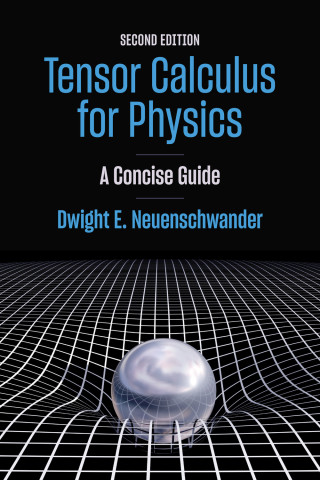
Reviews
Readers should think of the book as a record of remarks made to undergraduate mathematics students to help them see the big picture.
A charming, well-written, useful book. The conversational tone, the comparisons with everyday concepts and familiar objects, and the very gradual, simple, straightforward development of all topics will reassure those with a fear of math. Moreover, Gregson's enthusiastic explanations will encourage interest in the topics. His love of mathematical insight is infectious.
Book Details
Preface
1. Fundamentals
1.1. Why Mathematics?
1.2. What's It All About?
1.2.1. x?
1.2.2. Mathematics?
1.2.3. Functions and Equations
1.2.4. Relationships
1.2.5. Why Don't We Speak Mathematics All the Time?
1.2
Preface
1. Fundamentals
1.1. Why Mathematics?
1.2. What's It All About?
1.2.1. x?
1.2.2. Mathematics?
1.2.3. Functions and Equations
1.2.4. Relationships
1.2.5. Why Don't We Speak Mathematics All the Time?
1.2.6. And Why Do I Need to Understand It?
1.3. Working with Equations
1.3.1. Rearranging Equations
1.3.2. Order of Evaluating Algebraic Expressions
1.3.3. Some Useful Algebraic Relationships
1.3.4. A Word about Calculators
14. Exercises
15. Answers
2. Numbers
2.1. Decimal Number Representation
2.1.1. Significant Figures and Decimal Places
2.1.2. Scientific Notation
2.2. Binary and Hexadecimal Numbers
2.2.1. Binary Numbers
2.2.2. Conversion from Decimal to Binary
2.2.3. Hexadecimal Numbers
2.2.4. Conversion from Decimal to Hexadecimal
2.2.5. Binary-Hex Conversion
2.3. Preliminary Calculations: Check the Problem
2.3.1. Dimension Analysis
Application: How Much Rain Flows into the Oceans?
2.3.2. A Rough Calculation on the Back of an Envelope
2.4. Exercises
2.5. Answers
3. Powers and Logarithms
3.1. Powers and Indices
3.1.1. Some General Rules of Powers and Indices
3.1.2. Rules of Powers and Indices: Summary
3.2. Logarithms
3.2.1. What Are Logarithms?
3.2.2. Definition
Common Logarithms
Natural Logarithms
e: An Interesting Number
3.2.3. Mathematical Derivation of the Rules of Logarithms
3.2.4. Calculating Logarithms to a Different Base
3.2.5. Rules of Logarithms: Summary
3.3. Population Dynamics and the Exponential Equation
3.4. Exercises
3.5. Answers
4. Calculations and Applications
4.1. Convert Miles/Hour (mph or miles hour-1) to m s-1
4.2. Body Mass Index (lb/in2)
4.3. The pH of a Solution
4.4. How Many Microbes? The Viable Count Method
4.5. Surface Area of Humans
4.6. Blood Flow in the Arteries
4.7. The Growth of a Bacterial Population
4.8. Light Passing Through a Liquid
4.9. A Water Pollution Incident
4.10. The Best Straight Line
4.10.1. Notation for Sums of Sequences
4.10.2. Fitting the Best Straight Line
4.11. The Michaelis Menton Equation
4.11.1. The Lineweaver-Burke Transformation
4.11.2. The Eadie-Hofsee Transformation
4.11.3. Fitting the Parameters the Modern Way
4.12. Graphs and Functions
4.12.1. Plotting Graphs
4.12.2. Shapes of Some Useful Functions
5. Neat Tricks and Useful Solutions
5.1. The Difference of Two Squares
5.2. Mathematical Induction
5.3. Pythagoras' Theorem
5.4. Pythagoras' Theorem Revisited
5.5. Limits
5.6. Trigonometry: Angles with a Difference
5.6.1. Radians and Degrees
5.6.2. Trigonometric Ratios: Sine, Cosine, Tangent
Application: Radiation on a Surface
Application: What Force on the Biceps?
5.7. Numerical Calculations
5.7.1. Iteration
5.7.2. The Method of Iteration
5.7.3. The Method of Bisection
6. Differential Calculus
6.1. Introduction
6.2. What Is Differentiation?
6.1. Distance and Velocity
6.2. Average Velocity
6.3. Instantaneous Velocity
6.4. The Differential Coefficient of Any Function
6.5. Differentiability
6.6. Evaluation of Some Standard Derivatives
6.7. Derivatives Involving Two Functions
6.8. The Chain Rule
6.9. Optimum Values: Maxima and Minima
Application: How Fast Should a Fish Swim?
6.10. Small Errors
6.11. Summary Notes on Differentiation
6.11.1. Standard Derivatives
6.11.2. Rules for Differentiation
6.11.3. Maxima and Minima
6.12. Applications
Equation for Radioactive Decay
Half-Life
Fitting the Best Line: The Method of Least Squares
Cylinder of Minimum Surface Area
6.13. Exercises
6.14. Answers
7. Integral Calculus
7.1. Introduction
7.2. Integration as the Area under a Curve
7.2.1. Area of a Circle 1
7.2.2. Area of a Circle 2
7.3. Techniques of Integration
7.3.1. The Chain Rule
7.3.2. Integration by Parts
7.4. Summary Notes on Integration
7.4.1. Standard Integrals
7.4.2. Techniques
7.5. Applications
Mean Value
Surfaces and Volumes of Revolution
Equations of Motion
Pollution of a Lake
7.6. Exercises
7.7. Answers
8. Matrix Algebra
8.1. Introduction
8.2. What Is a Matrix?
8.3. Developing the Algebra
8.3.1. Equality of Matrices
8.3.2. Addition of Matrices
8.3.3. Subtraction of Matrices
8.3.4. Zero or Null Matrix
8.3.5. Transpose Matrix
8.3.6. Identity Matrix
8.3.7. Multiplication by a Scalar
8.3.8. Matrix Multiplication
8.4. Applications
Population Dynamics
Using Matrix Multiplication to Rotate Coordinates
Finding Pathways
8.5. Determinants
8.5.1. The Determinant of a 3 3 Matrix
8.5.2. Minors and Cofactors
8.5.3. Area of a Triangle
8.5.4. Some Properties of Determinants
8.6. The Inverse Matrix
8.6.1. Solution of (Lots of) Simultaneous Equations
8.6.2. Eigenvalues and Eigenvectors
9. Statistics
9.1. Introduction
9.2. The Statistical Method
9.3. Basic Statistics
9.3.1. Mean
9.3.2. Variance
9.3.3. Standard Deviation
9.3.4. Standard Error (of...)
9.4. The Normal Frequency Distribution
9.5. The t-Test: Are Two Means Different?
9.6. How to Perform a t-Test
9.7. Is the Data from a Normal Distribution?
9.8. The 2 Test for Frequencies
9.8.1. Degrees of Freedom
9.8.2. Contingency Tables: Are Hair and Eye Color Related?
9.9. The Mann-Whitney Test: Are Two Samples Different?
9.10. One-Tailed Tests
10. The End of the Beginning
Further Reading
Index





